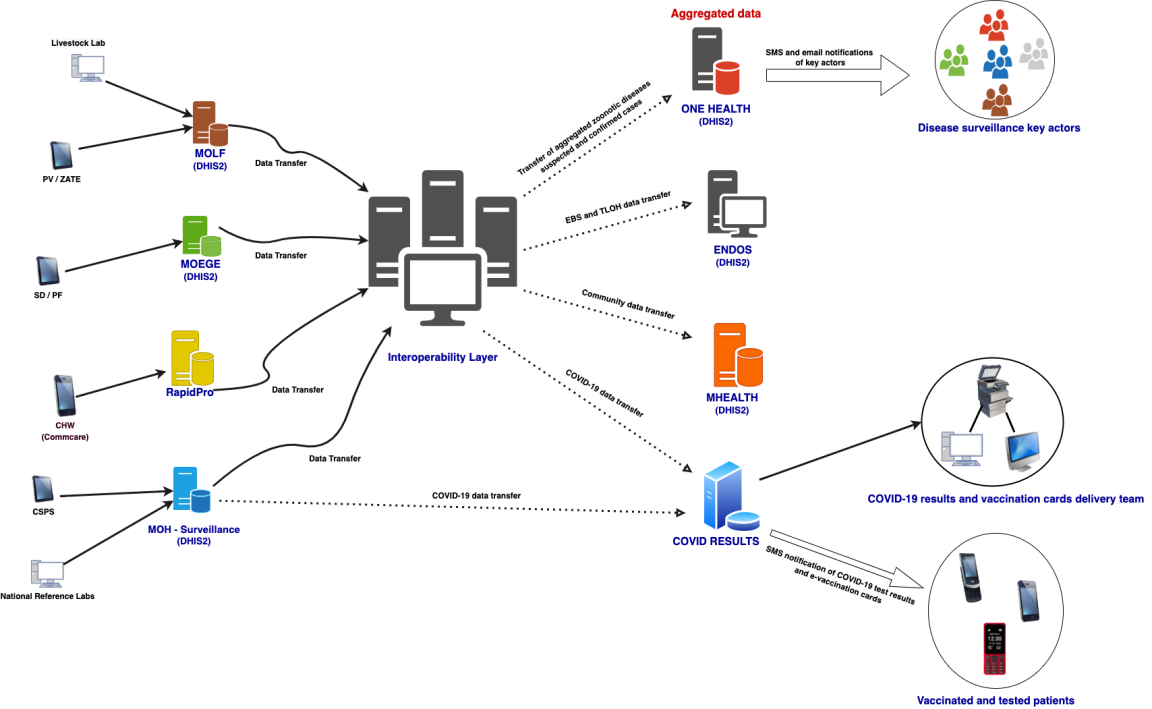A DHIS2-based tailored real-time disease surveillance system was developed for three ministries linking to a One-Health data warehouse aggregating surveillance data across sectors, by means of an interoperability layer.
In 2019, USAID supported the development of a One Health information system in Burkina Faso with MEASURE Evaluation (a USAID funded project), and continued support through the Country Health Information Systems and Data Use (CHISU) program to create a comprehensive and effective response to zoonotic and key human health threats at the community level.
Background
For the first time, human and zoonotic data can be integrated and accessible to the information systems of the Ministry of Health (MOH), the Ministry of Animal Resources and Fisheries, and the Ministry of Environment Green Economy and Climate Change. The One Health system (developed on the District Health Information System version 2 (DHIS2) platform) encompasses disease surveillance across human, animal, and environmental health information systems, human and animal laboratory networks, and human and animal emergency response.
Solution
Interoperability can be defined as “the ability of different information technology systems and software applications to communicate, exchange data, and use the information that has been exchanged.” In the case of Burkina Faso the Interoperability Layer is a centralized set of software programs and scripts that allows interoperability to happen.
The availability of this interoperability layer has opened new possibilities for the Government of Burkina Faso to provide innovative and efficient responses to ongoing and new health crises, strengthening the overall country’s health system and providing relief to citizens.
“We used to have difficulties operationalizing the early warning system put in place to facilitate reporting and this process is now so much easier thanks to the One Health system.”
Interoperability made it possible for the government to quickly deploy a COVID-19 case management and tracking system on the MOH One Health database to share data with the e-vaccination and testing system. This data sharing enabled health workers to efficiently deliver test results and vaccination cards to people across Burkina Faso.
Impact
The interoperability layer also allows:
- One Health system to collect all zoonotic disease surveillance data and share it with three ministries, supporting case-finding and investigation.
- One Health system to be used for COVID-19 reporting.
- ENDOS, the national routine health information system, to report weekly disease surveillance for the MOH.
- MOH to aggregate and share an electronic weekly report using data from health facilities.
- DHIS2-based community health system to share data with health facilities.
Download the success story here (PDF, 177 KB).
